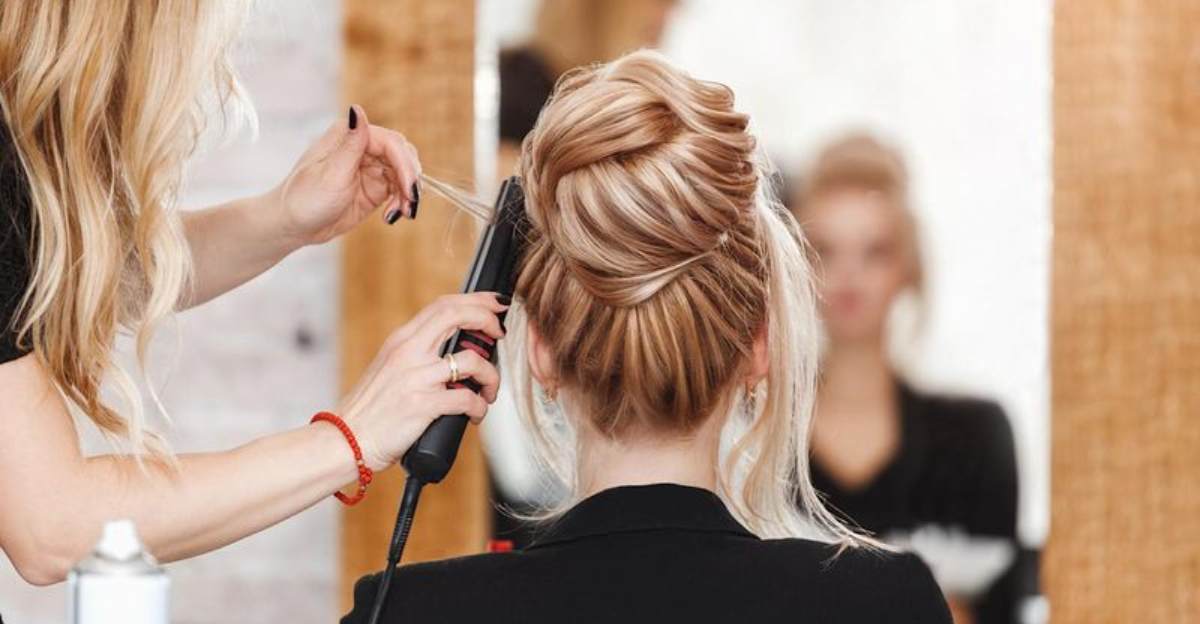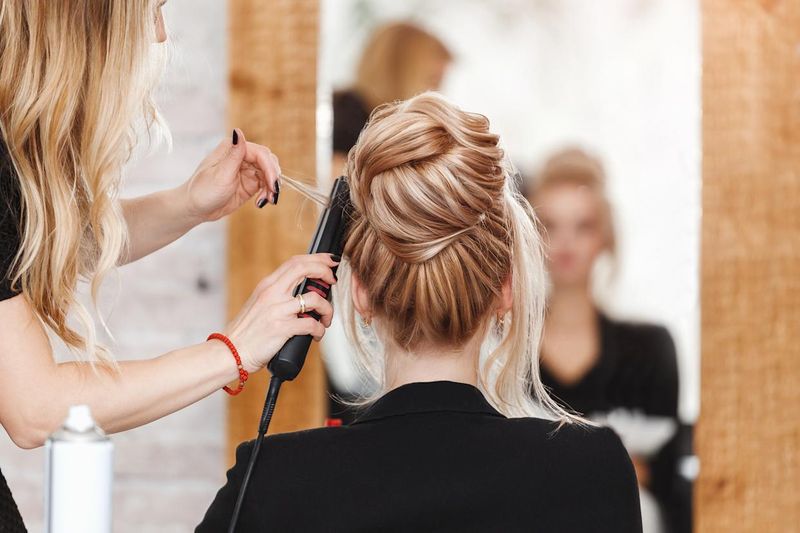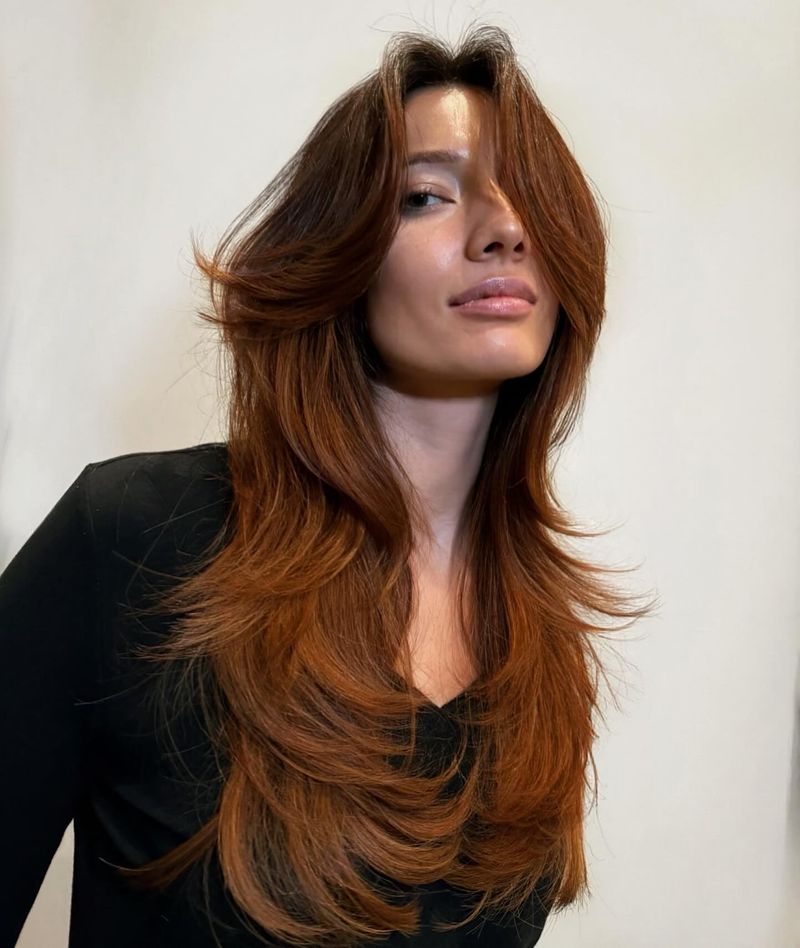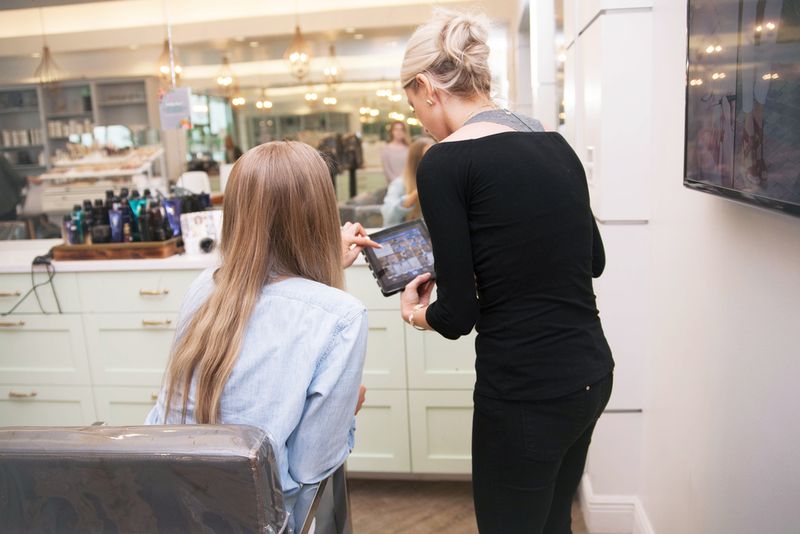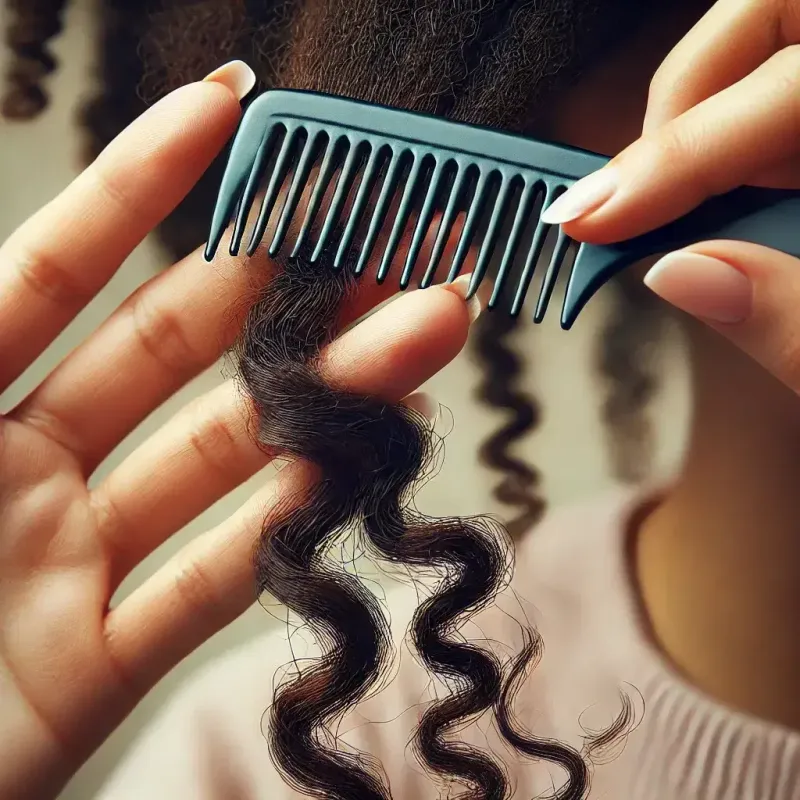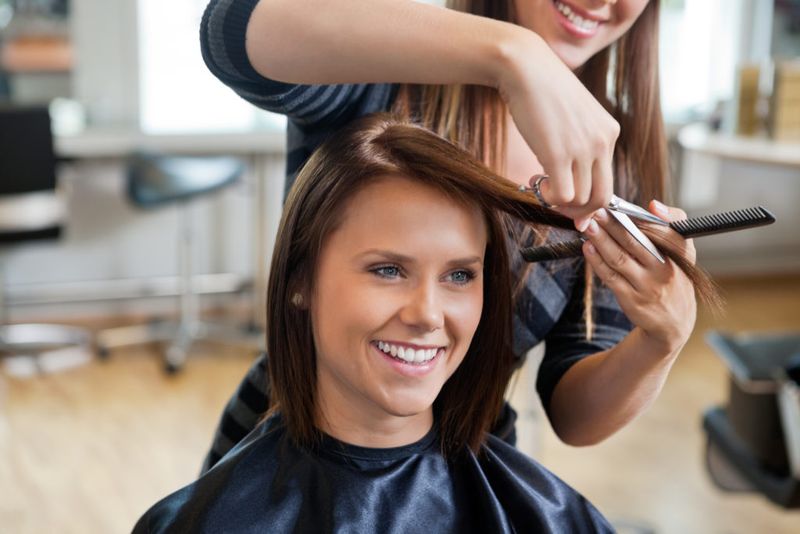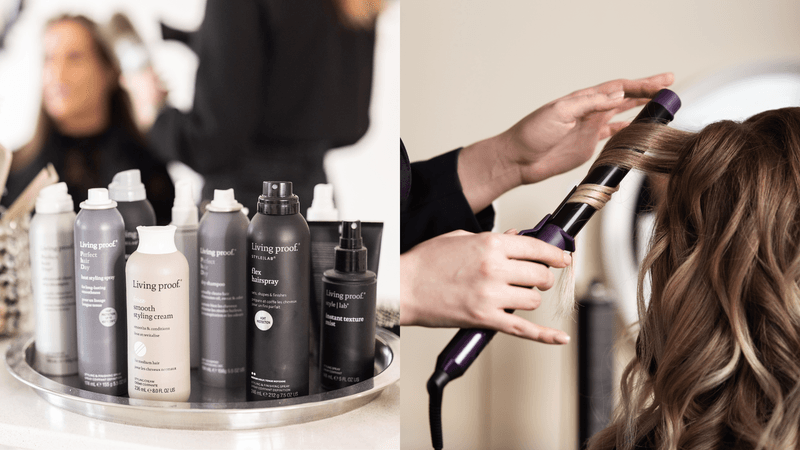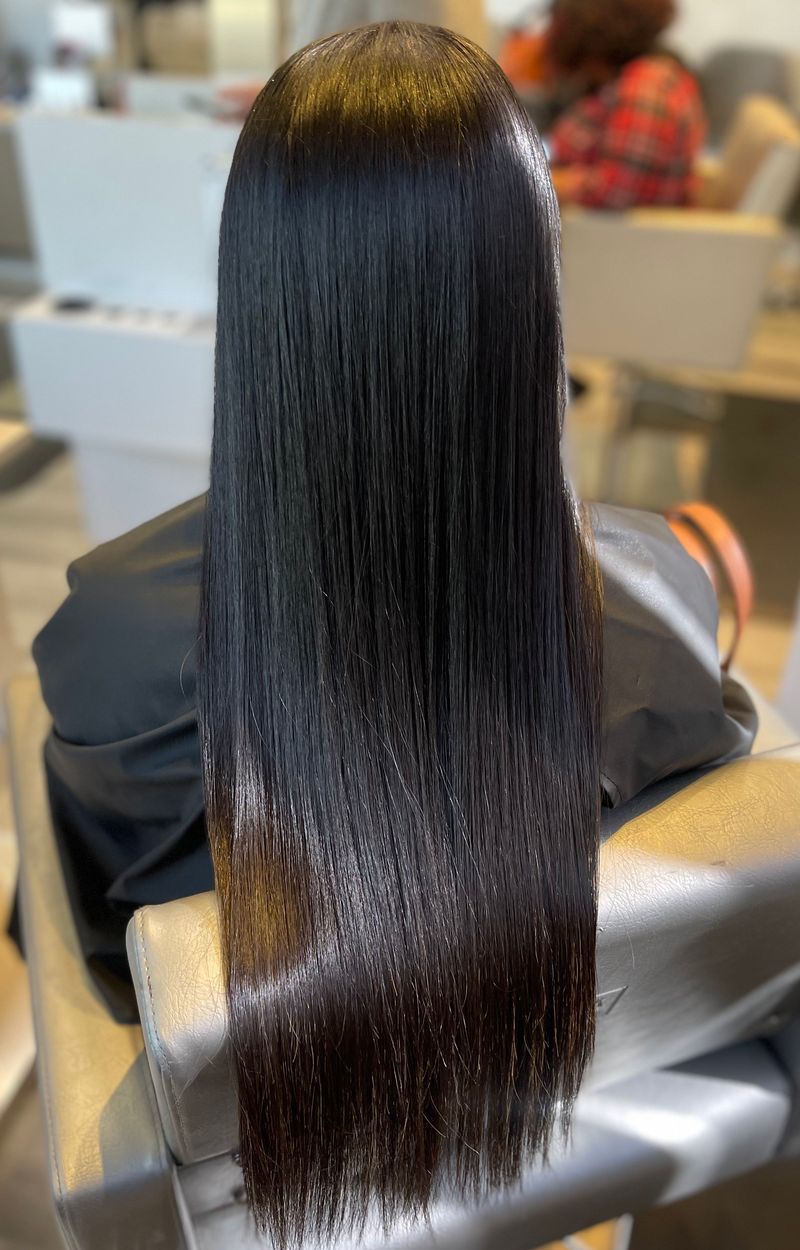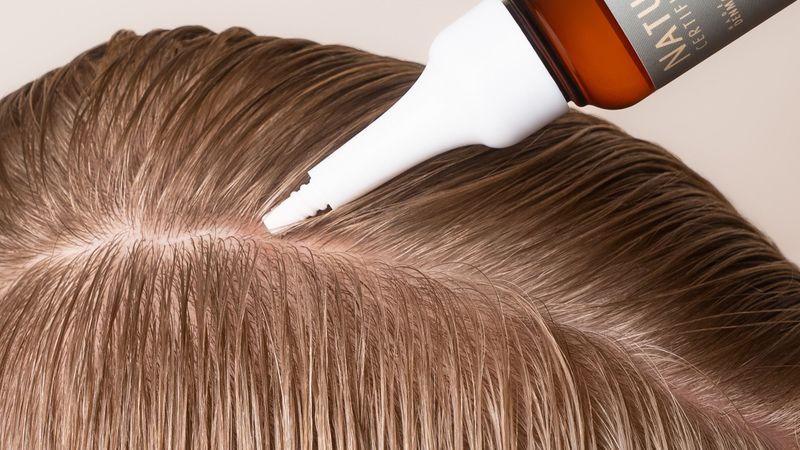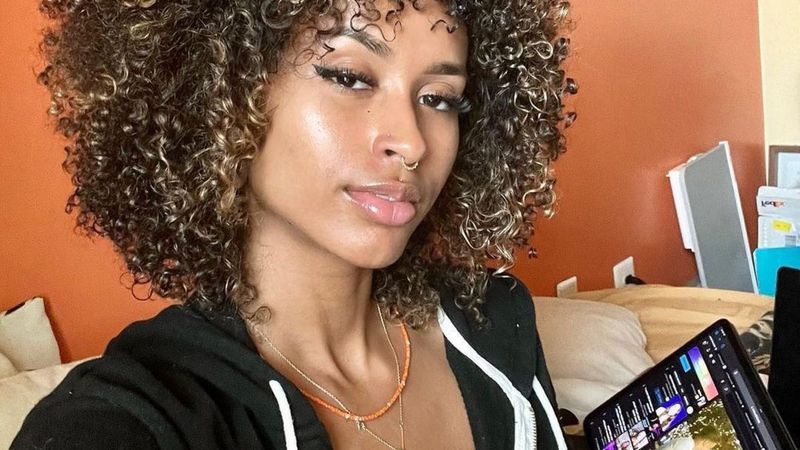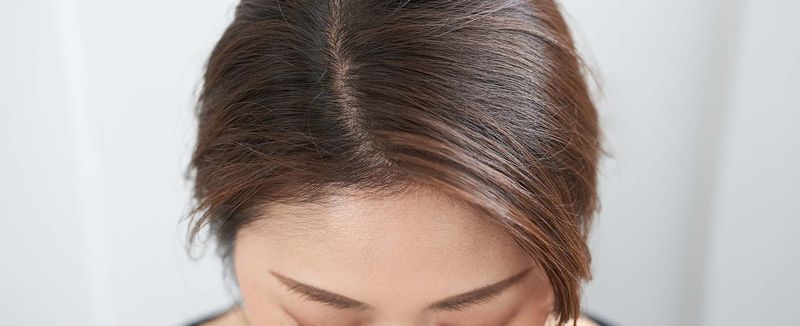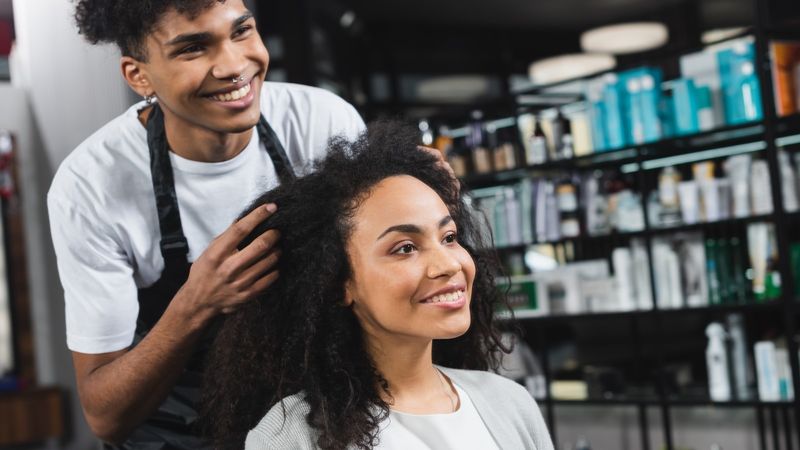Walking into a salon prepared can make the difference between a good haircut and a great one. When stylists have the right canvas to work with, they can truly showcase their skills and give you the results you’re dreaming of. The following tips will help you get your hair in the best possible condition before your appointment, setting the stage for a successful salon experience.
1. Skip the Day-Of Wash
Natural oils actually help stylists see your hair’s true texture and behavior. Washing your hair the day of your appointment strips away these oils, making it harder for them to understand how your hair naturally falls.
Most colorists prefer working with hair that’s slightly dirty because color adheres better. For haircuts, slightly lived-in hair shows your stylist how your strands naturally behave in real life, not just when freshly washed.
Related: -7 Straight-Hair Problems No One Talks About And 8 Easy Fixes That Shine
Aim to wash your hair 1-2 days before your appointment for that perfect balance – clean enough to not feel embarrassed, but natural enough for your stylist to work with effectively.
2. Come With Clean Product-Free Hair
Heavy styling products like mousse, gel, and hairspray can interfere with color processing and cutting precision. Product buildup creates a barrier that prevents color from penetrating evenly and can cause unpredictable results.
While you shouldn’t wash day-of, do ensure your last wash removed all product residue. Use a clarifying shampoo a few days before your appointment to strip away buildup if you’re a regular product user.
Your stylist will thank you for bringing a clean canvas that allows them to see your hair’s true condition without fighting through layers of yesterday’s styling products.
3. Document Your Hair Inspiration
Pictures speak louder than words when communicating with your stylist. “I want Jennifer Aniston’s hair” means different things to different people – which era? Which specific cut?
Save multiple angles of styles you love, and also include photos of what you definitely don’t want. This visual communication prevents misunderstandings that words alone might create.
Organize these inspiration photos on your phone before arriving so you’re not frantically scrolling through Instagram while your stylist waits. Remember that the best references show hair similar to your texture and thickness for realistic expectations.
4. Know Your Hair History
Your stylist needs to know what chemical treatments your hair has undergone in the past year or two. Box dye from eight months ago or a keratin treatment from last summer can dramatically affect how your hair responds to new color or treatments.
Be honest about at-home coloring adventures, even if they didn’t turn out great. Your stylist isn’t there to judge – they need this information to formulate correctly and avoid damaging reactions.
Keep a simple hair journal noting dates and types of chemical services if you frequently change your hair. This timeline helps stylists understand what they’re working with beneath the surface.
5. Detangle Before You Arrive
Walking in with bird’s-nest hair wastes precious appointment time that could be spent on your actual service. A thorough but gentle detangling session at home prevents painful salon moments and protects your hair from unnecessary breakage.
Start from the ends and work your way up using a wide-tooth comb or detangling brush. Apply a leave-in detangler if needed for particularly stubborn knots.
This simple step shows respect for your stylist’s time and allows them to immediately assess your hair’s condition rather than fighting through tangles. Your scalp will thank you too – no one enjoys that first painful brush-through at the wash basin!
6. Trim Your Split Ends Regularly
Waiting until your hair is severely damaged before booking an appointment creates unrealistic expectations. Split ends can’t be magically repaired – they need to be cut off.
Maintaining regular trims every 8-12 weeks prevents damage from traveling up the hair shaft. Your stylist can focus on giving you the style you want rather than removing more length than expected just to eliminate damage.
If you’re growing your hair out, counter-intuitive as it seems, those maintenance trims actually help you reach your length goals faster by keeping ends healthy. Remember: healthy ends mean less breakage and more actual length retention over time.
7. Ease Up On Heat Styling
Excessive heat styling in the weeks before your appointment can compromise your hair’s integrity. Flat irons, curling wands, and blow dryers operating at high temperatures create porosity issues that affect how color deposits and how well treatments penetrate.
Give your hair a heat-styling break for at least a week before your appointment. Your stylist will be working with healthier strands that better reveal their true condition and behavior.
If you absolutely must heat style, always use a thermal protectant and keep tools below 350°F. Your colorist will especially appreciate this step, as heat-damaged hair absorbs color unevenly and often results in patchy or faded results.
8. Hydrate From The Inside Out
Beautiful hair starts with internal hydration. Increasing your water intake in the days leading up to your appointment helps your hair and scalp reach optimal condition. Dehydrated hair appears dull and processes color differently than well-hydrated strands.
Aim for at least eight glasses of water daily for several days before your appointment. Your colorist will notice the difference – well-hydrated hair accepts color more evenly and maintains vibrancy longer.
This simple prep step benefits your skin too, giving you that coveted healthy glow to complement your fresh new hairstyle. Consider it part of your beauty routine rather than just a health practice.
9. Avoid Dramatic DIY Changes
That sudden urge to chop bangs or experiment with box dye the week before your appointment? Resist it! Emergency fix-ups eat into your scheduled service time and often limit what your stylist can achieve.
Stylists need to see your hair’s natural state and growth patterns to create the best look for you. Last-minute DIY changes can force them to create a compromise style rather than what you originally wanted.
If you’re feeling the itch for immediate change, try temporary solutions like clip-in extensions or styling your hair differently. Save the permanent transformations for your professional who has the training to execute them properly.
10. Exfoliate Your Scalp
Your scalp is the foundation for healthy hair growth and affects how your color service develops. Product buildup and dead skin cells can block hair follicles and create an uneven base for color application.
Use a gentle scalp scrub or exfoliating shampoo 2-3 days before your appointment. This removes buildup without stripping natural oils completely, creating the perfect canvas for your stylist.
A clean, exfoliated scalp also helps prevent that uncomfortable itching that sometimes occurs during color services. Your stylist will appreciate working with a fresh scalp, and you’ll enjoy better color results and a more comfortable experience.
11. Wear Your Hair Naturally
Arriving with your hair in its natural state gives your stylist crucial information. Those cowlicks, wave patterns, and growth directions are important clues that help them create a cut that works with – not against – your natural texture.
Skip the straightening, curling, or excessive styling on appointment day. Your stylist needs to see how your hair actually behaves when you’re not forcing it into submission.
Many clients are surprised when stylists ask them to take down elaborately styled hair, but seeing your natural texture is like giving your stylist a roadmap to success. This transparency leads to styles that are easier to maintain at home because they work with your hair’s natural tendencies.
12. Schedule Strategically
Booking your appointment at the right time makes a huge difference in your salon experience. Morning appointments often mean fresher stylists who haven’t been on their feet all day and salons that are less hectic and noisy.
For color services especially, natural daylight helps your stylist better assess true tones. Book these appointments during daylight hours rather than evening slots when salons rely solely on artificial lighting.
Avoid scheduling right before major events – allow at least a day or two between your salon visit and any important occasion. This gives you time to get used to your new style and make any minor adjustments if needed.
13. Prepare Your Scalp For Color
A sensitive scalp can make color services uncomfortable and sometimes even prevent you from achieving your desired shade. Start preparing your scalp a week before your color appointment to minimize irritation.
Avoid washing your hair the day before your appointment, as natural oils protect your scalp during chemical services. However, don’t arrive with an overly itchy or flaky scalp either – this can actually interfere with color processing.
If you know you have sensitivity, take an antihistamine an hour before your appointment (after checking with your doctor). Mention any previous reactions to your stylist so they can adjust formulations or processing techniques accordingly.
14. Dress Appropriately
What you wear to your appointment affects both your comfort and the final look assessment. Dark clothing for color appointments risks being ruined despite capes and towels – colorful splatters have a way of finding exposed fabric.
Button-up or zip-front tops allow you to change without pulling shirts over freshly styled hair. Avoid high necklines that interfere with washing or turtlenecks that get wet and uncomfortable.
Jewelry can also get in the way, particularly earrings that tangle in hair or necklaces that clash with capes. Simple, comfortable clothing lets you focus on your hair experience rather than worrying about your outfit surviving the appointment.
15. Bring Your Styling Products
The products you use daily significantly impact how your hair behaves at home. Bringing your regular styling products gives your stylist valuable insights into your routine and allows them to incorporate these products into your final style.
Your stylist can demonstrate exactly how to use your products to achieve salon results at home. They might suggest adjustments to your application technique that make a dramatic difference in your daily results.
This step creates continuity between salon day and everyday styling. If your stylist recommends different products, they can explain exactly what your current products are missing or how the new ones would integrate with what you already use.

